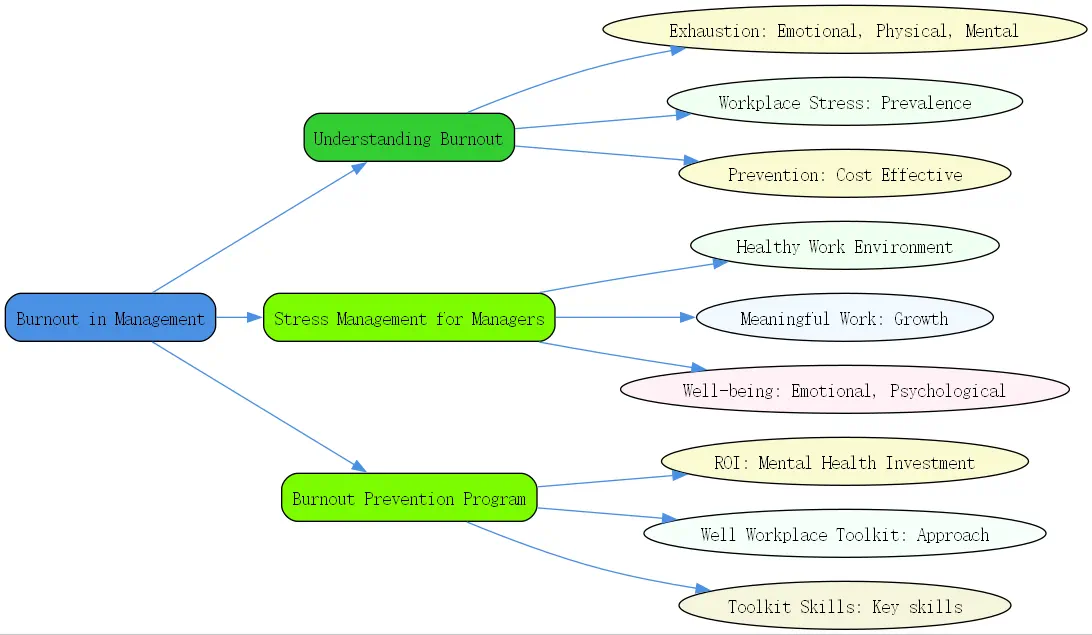Understanding Burnout in Management

Defining Burnout: Emotional, Physical, and Mental Exhaustion

Burnout in management is a significant issue characterized by emotional, physical, and mental exhaustion. The primary culprit behind this condition is excessive and prolonged stress, which deeply impacts both the personal well-being and productivity of employees. As managers and leaders bear heavy responsibilities and constant pressure, recognizing the root causes of burnout becomes essential to foster a healthy work environment.
The Prevalence of Workplace Stress and Burnout
Recent statistics from the Work in America survey 2025 highlight that 77% of workers experience work-related stress. The repercussions of this are vast, with 31% reporting emotional exhaustion and 26% experiencing a lack of motivation. Such environments also lead to increased desires to isolate oneself, reduced workplace collaboration, and a significant number expressing a wish to quit. Additional indicators of burnout include lowered productivity, irritability, frequent illnesses, and even substance abuse, painting a clear picture of why tackling this issue head-on is crucial.
Why Prevention is Key: The Cost of Burnout Treatment
The journey to recovery for those suffering from burnout can span 6-12 months, indicating how prevention far outweighs the cure. Recognizing early symptoms and adopting proactive stress management strategies are invaluable in curtailing the costly and extensive process of treating advanced burnout. Moreover, addressing these early signs fosters a more resilient workforce capable of handling workplace pressures adeptly.
Effective Stress Management Strategies for Managers
Creating a Healthy and Supportive Work Environment
Promoting a balanced work environment through flexible work policies significantly enhances employee satisfaction. Adaptations like blended work-from-home and in-office schedules are appreciated by workers, facilitating a better work-life balance. Especially post-COVID, these adaptations not only maintained productivity but also introduced new dynamics to managing work stress effectively.
Fostering Meaningful Work and Growth Opportunities
Alignment of tasks with individual strengths and providing growth and development opportunities are fundamental in mitigating burnout risks. These initiatives ensure employees experience successes, fostering a positive workplace culture and reinforcing their professional pathway aligned with the organization’s goals.
Emphasizing Emotional and Psychological Well-being
In light of the national mental health crisis affecting various organizational levels, placing a premium on emotional and psychological well-being is more crucial than ever. Integrating stress relief practices, and promoting workshops and techniques for effective burnout and stress management remain paramount. These help employees manage and respond to stress constructively, contributing to a healthier, more productive workplace dynamic.
Implementing a Burnout Prevention Program: The Well Workplace Toolkit
The ROI of Investing in Mental Health
A compelling insight from the Mental Health at Work report 2013 revealed that every $1 spent on mental health initiatives yields a $4 return in terms of enhanced productivity and healthier employees. This statistic underscores the value of investing in comprehensive mental health strategies that extend beyond mere financial metrics, illustrating significant gains in employee well-being and efficiency.

The Well Workplace Toolkit: A Comprehensive Approach
The Well Workplace Toolkit introduces a holistic approach to managing workplace stress by incorporating mind-body-spirit wellness tools applicable across all employee levels. Techniques such as deep relaxation, mindfulness, and guided imagery equip employees with the necessary resources to handle stressful situations more effectively, promoting a sustainable work environment.

Key Skills Taught in the Toolkit
Critical competencies from the toolkit include understanding and managing stress from innovative perspectives, transitioning physiological responses from fight-or-flight to calm, and enhancing problem-solving capacities. These skills are vital in setting realistic goals, resolving conflicts, and developing effective action plans, ultimately leading to improved personal and organizational outcomes.




